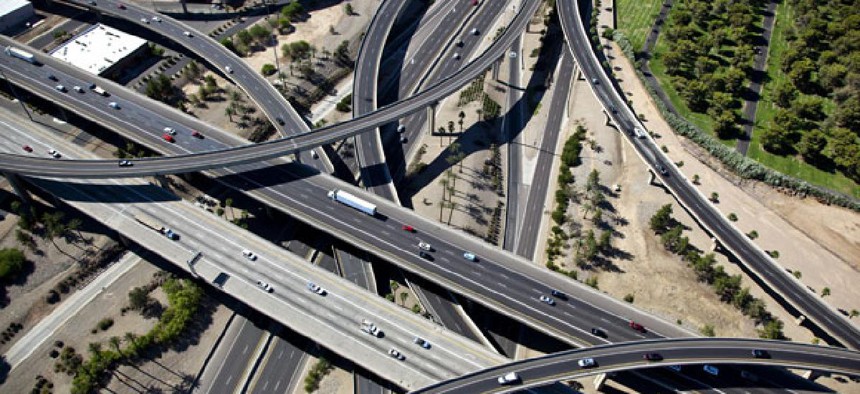
Tim Roberts Photography/Shutterstock.com
The Future of Public Roads Is in Private Hands
More and more states are privatizing highways and roads. Whether that's a good thing or a bad thing is a matter of increasing debate.
A few weeks ago, the Colorado Department of Transportation reached a 50-year deal with a private investment group to handle the improvement, maintenance, and operation of US 36 between Denver and Boulder. On paper, everyone seems to have made out well. The state gets money up front, the investors get a share of the toll revenue, and commuters get an upgraded corridor 20 years ahead of schedule. CDOT officials are already hoping that this "first public-private partnership" is just the first of many.
"We certainly look at public-private partnerships as an opportunity to provide additional improvements and services to the traveling public," says spokeswoman Amy Ford, who adds that the department is actively considering similar arrangements for several other major roads — segments of I-70, C-470, and I-25, among them — in the metro area.
Public-private partnerships for infrastructure (often called PPPs or P3s) have been on the rise in recent years, and many experts believe the trend has yet to peak. If the activity of the past several weeks is any indication, they may be right. A billion-dollar PPP for the East End Crossing, in Indiana, was announced in late March. News of a $1.5 billion PPP overhaul of the Goethals Bridge, in New York City, came in April. The Pennsylvania D.O.T. placed an open call to private firms for PPP projects just last week.
PPPs provide a valuable public service while shifting the financial risk to private wallets. Advocates also mention efficiency: private developers, driven by an urgent push for profits, can keep costs lowers and complete work faster than the public sector. Supporters believe that in exchange for this revenue share they provide the public with the broader economic advantages of improved metro area mobility. Besides, states just don't have the money right now to do these projects on their own.
"There's a whole series of these efforts that involve both the public and the private sector," says transport scholar R. Richard Geddes of Cornell University. "A lot of this simply would not get built without some private sector investors coming in to put up the capital and to bear the risk of trying it."
(Image via Tim Roberts Photography/Shutterstock.com)






